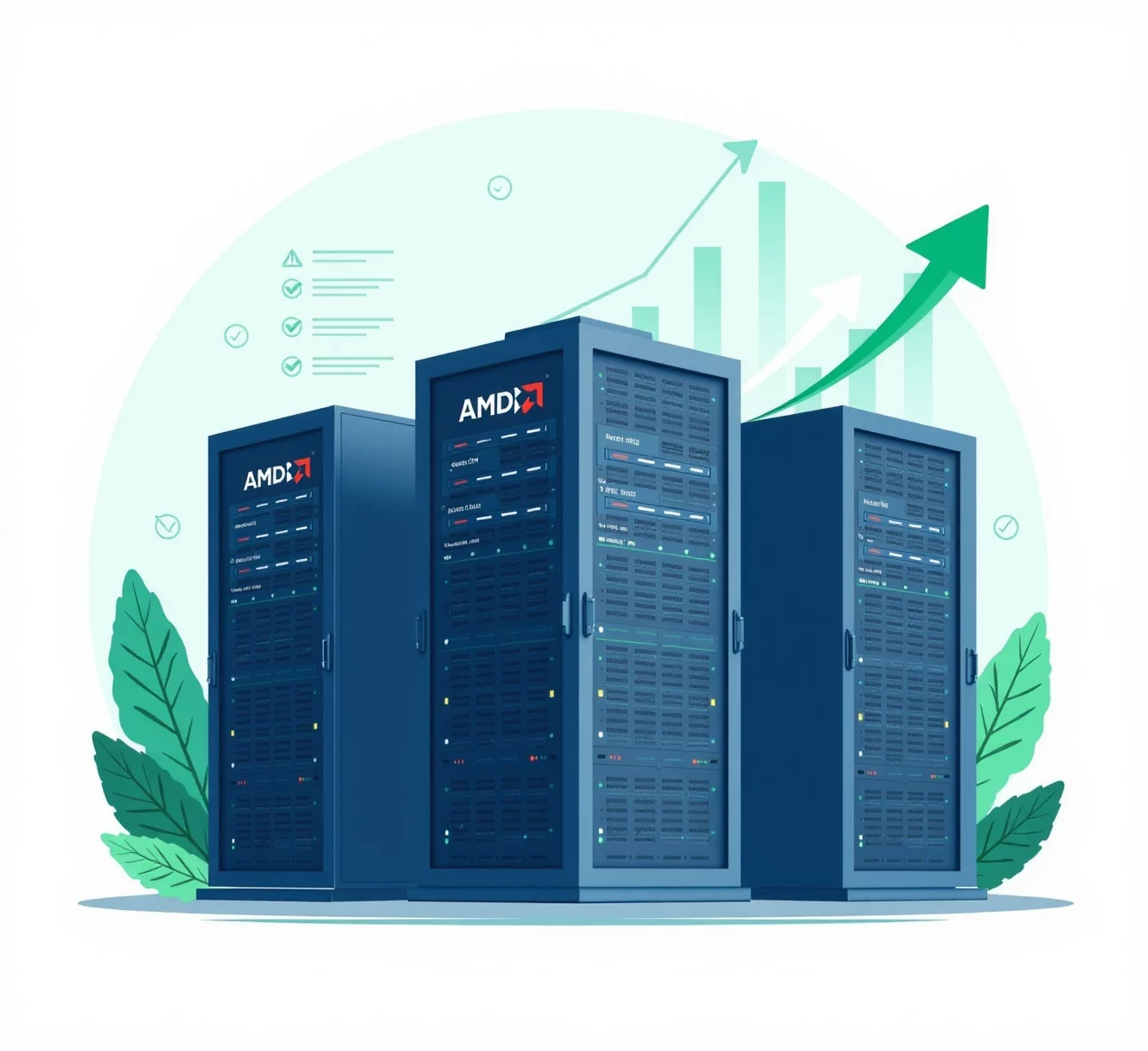
AMD’s Data Center Revenue Jumps 122% in Q3 2024: What It Means for the Industry
In Q3 2024, AMD (Advanced Micro Devices) reported a remarkable 122% increase in data center revenue year-over-year. This growth marks a pivotal moment for AMD, which continues to gain traction in an increasingly competitive data center and AI hardware market. Driven by substantial demand for its Epyc CPUs and Instinct GPUs, AMD has solidified its position as a key player in AI and enterprise computing.
Below, we delve into the factors fueling AMD’s record-breaking quarter, how their strategic advancements shape the market, and what these changes mean for the future of data centers and AI technology.
AMD’s Impressive Q3 2024 Financials
According to AMD's latest financial report, the company’s data center revenue reached an unprecedented $3.5 billion, representing more than half of its total revenue for the quarter. These gains reflect AMD’s strengthened position in the data center market as enterprises increasingly adopt advanced AI, cloud, and high-performance computing (HPC) workloads. The spike is largely attributable to significant adoption of AMD’s Epyc processors and Instinct GPUs, two product lines that are transforming enterprise infrastructure.
Key Drivers of AMD’s Growth in Data Center Revenue
1. Rising Demand for AI Acceleration Hardware
The global demand for AI and machine learning (ML) accelerators is growing rapidly. AI workloads require massive processing power and efficient parallel computing capabilities, driving demand for GPUs and specialized accelerators. AMD's Instinct MI300 series, built to support high-level AI and HPC workloads, has gained traction among cloud service providers (CSPs) and enterprises looking to optimize their AI capabilities.
In Q3, AMD reported strong demand for its MI300 GPUs, emphasizing the role of AI hardware in its revenue growth. With AI and machine learning projected to remain a top priority for organizations globally, AMD’s focus on building high-efficiency GPUs positions the company to capitalize on future industry growth.
2. Competition with Nvidia in the AI Space
While Nvidia currently leads the AI GPU market, AMD’s recent advancements signal a shift in competitive dynamics. AMD’s Instinct GPUs are increasingly being integrated into large-scale AI models, neural networks, and deep learning projects, areas where Nvidia has historically dominated. The competition between Nvidia and AMD for the AI hardware market has spurred technological innovation, benefiting cloud providers and enterprise clients seeking powerful AI infrastructure.
3. Market Demand for Efficient and Cost-Effective Data Center Solutions
With data centers expanding globally, efficiency and performance remain top concerns. AMD’s Epyc processors, known for their impressive price-to-performance ratio, have become popular among data centers focused on reducing operational costs while improving processing speed. AMD’s Epyc CPUs offer high core density, superior scalability, and advanced power efficiency, appealing to enterprises that prioritize cost-effective infrastructure. As a result, AMD’s Epyc processors continue to gain market share, reflecting a shift toward more budget-conscious, sustainable data center solutions.
4. Expanding Partnerships and Customer Base
To further strengthen its position in the market, AMD has expanded partnerships with major cloud providers, including Google Cloud, AWS, and Microsoft Azure. These collaborations have bolstered AMD’s market presence and allowed for broader adoption of its hardware across global data centers. Through strategic alliances, AMD has positioned itself as a reliable alternative to Intel and Nvidia for high-performance computing solutions.
Strategic Significance of AMD’s Growth for the Data Center Industry
Redefining Performance Standards for AI Workloads
AMD’s success in the data center space challenges traditional performance standards and widens the array of available options for AI workloads. With Instinct GPUs proving competitive in AI training and inference applications, organizations now have a broader selection of powerful hardware to support AI models. This competition benefits customers by fostering innovation, ensuring AMD and Nvidia consistently push the boundaries of AI technology to improve speed, efficiency, and energy consumption.
Enabling Scalable AI and HPC Solutions for Enterprises
AMD’s Instinct and Epyc lines enable scalable AI and HPC solutions, addressing a critical need for data centers that require high-computing power. As enterprises increasingly rely on AI and machine learning to make data-driven decisions, AMD’s scalable hardware solutions allow organizations to keep pace with advancements while controlling infrastructure costs.
Fostering Sustainability in Data Center Infrastructure
Energy efficiency and sustainability are becoming focal points for data centers worldwide, with companies under pressure to meet carbon reduction goals. AMD’s hardware, particularly its Epyc processors, delivers performance while maintaining energy efficiency, a critical attribute for enterprises committed to sustainability. The introduction of greener, high-performance processors helps data centers reduce operational costs and environmental impact, aligning AMD’s product offerings with global sustainability initiatives.
Future Prospects for AMD in the Data Center and AI Market
The demand for AI hardware and high-performance computing solutions is projected to increase as organizations accelerate digital transformation. AMD’s growth trajectory suggests that its continued investment in advanced data center hardware will further its reach in these sectors. With AI market projections forecasting exponential growth, AMD’s Instinct GPUs and Epyc CPUs are expected to remain essential to enterprises and data centers optimizing for AI capabilities.
AMD’s Q3 2024 results underscore its potential to challenge industry giants while shaping the future of data centers, AI, and HPC. If AMD sustains its momentum, it may become one of the leading forces in AI acceleration and data center infrastructure.
For a deeper look into AMD's achievements and data center solutions, keep an eye on their upcoming releases and partnerships, as these will likely determine the next steps in data center and AI advancements.







